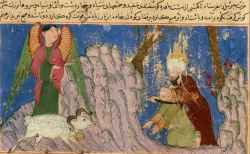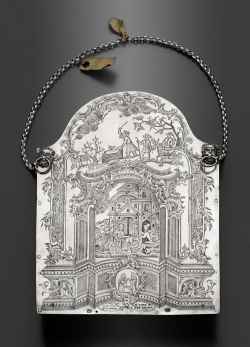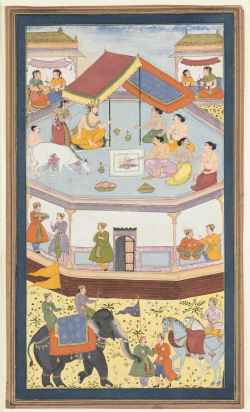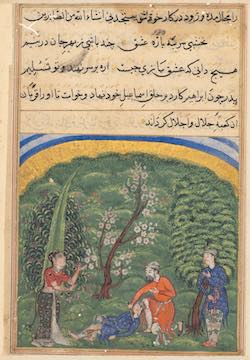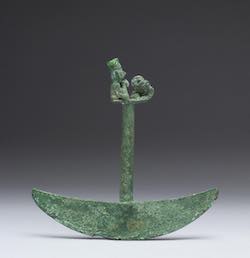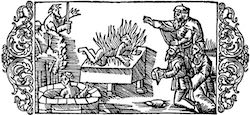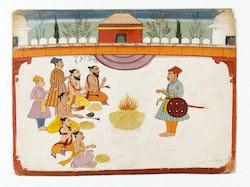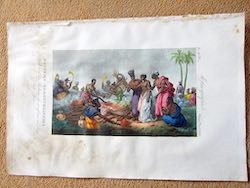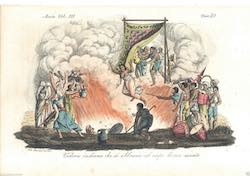Topic: 2. Sacrifice and religion: Comparisons, Antiquarians, Anthropology (16th-18th Century)
Religious sacrifices across various cultures and contexts sparked widespread interest in Early Modern Europe. As Christianity expanded into regions inhabited by "infidels" and "pagans", Europeans encountered a diverse array of sacrificial customs, ranging from the Sati rituals in India to the Aztec sacrifices in the Americas. This cross-cultural exposure captivated a wide audience, including theologians, philosophers, political thinkers, antiquarians, orientalists, missionaries, poets, artists, and even the general public. These encounters broadened the European understanding of sacrifice and led to a critical reassessment of classical and biblical sacrificial rites. This section includes:
- Sources: A selection of early modern printed materials, which include descriptions of the Americas, Asia, and Africa, alongside antiquarian and philological studies on religious sacrifice in classical antiquity and beyond. It also presents early modern works of ethnological observations and the first attempts to compare different sacrificial practices in various traditions and contexts, laying the groundwork for disciplines like the history of religions and anthropology.
- Iconographic Representations: A rich collection of images from the 16th to 18th centuries, illustrating a range of sacrificial rituals and practices as seen in different cultural and geographical contexts.
- Related Bibliography: An extensive bibliography spanning scholarly works from the 19th to 21st centuries, providing contemporary analyses and interpretations of these early studies and observations.
The Funeral Pile of a Husband (1810)
http://www.columbia.edu/itc/mealac/pritchett/00routesdata/1800_1899/hinduism/sati/sati.html
The Sacrifice of Isaac [1425]
from: Hafiz Abru, Majma` al-tavarikh, Sacrifice of Ismāʿīl, Walters Manuscript W.676Aa [from Istanbul]
The Walters Art Museum, Baltimore, Maryland
The Sacrifice of Isaac (1309)
from: Brussels Pentateuch, Brussels, 1309
(Hamburg, Staats- und Universitätsbibliothek, Codex Levy 19, f. 34v
The Sacrifice of Isaac [1581]
from: Ishâq al-Nishâpûrî, Histoire du Coran ou Histoires des prophètes et des rois du passé. Qesas al-anbiyâ [Persan 54, fol. 32v]
Paris, BnF, ms Persan 54 fol. 32v
The Sacrifice of Isaac (verso of a parcel-gilt silver and enamel Torah shield, signed and dated in Hebrew by Elimelech Tzoref in 1782) (1782)
Boston Museum of Fine Arts
The Sacrifice of Lystra (1750)
from: Great Britain
V&A Museum, London
The sacrifice of Polyxena (1401)
from: Boccaccio, Giovanni, De claris mulieribus, Bibliothèque nationale de France, fr. 12420, fol. 56v
Bibliothèque Nationale de France, Paris
The Sacrifice of Polyxena. Folding Fan Showing the Painting of Pietro da Cortona (1730)
from: Holland
The State Ermitage Museum, Saint Petersburg
The sacrificed horse is prepared (1712)
from: Ramayana, Bala Kanda, Ms Add. 15295, fol. 34
British Library, London [from Udaipur]
The Sentinel in the Employ of the Shah of Tabaristan prepares to Sacrifice his Son to the Ghost of the Shah’s Soul [1560]
from: Tales of a Parrot, [manuscript], [1560]
The Cleveland Museum of Arts, Cleveland
Two humans are sacrificed on this picture. One is drowned in a holy spring and one is burned. The man with a sword symbolizes probably another way of sacrificing of humans. To the right worshipping people. (1555)
from: Olaus Magnus, Historia de gentibus septentrionalibus, Roma,Giovanni M. Viotto, 1555 (Book 3, Ch. 7, On the Geats’ Worship and Sacrifice, De sacrisi, et sacrificiis Gothorum).
Vedova di un indiano (1845)
from: Atlante Illustrato, Florence, 1845
http://www.columbia.edu/itc/mealac/pritchett/00routesdata/1800_1899/hinduism/sati/sati.html
Vedova indiana che si abbrucia (1816)
from: Ferrario, G. Il costumo antico e moderno, Florence, c.1816
http://www.columbia.edu/itc/mealac/pritchett/00routesdata/1800_1899/hinduism/sati/sati.html
Veuve hindoue allant au bucher (1797)
from: Abdul-Kerym, Voyage de l'Inde a la Mekke, ca. 1797
http://www.columbia.edu/itc/mealac/pritchett/00routesdata/1800_1899/hinduism/sati/sati.html
Veuve indouve hallant (1825)
http://www.columbia.edu/itc/mealac/pritchett/00routesdata/1800_1899/hinduism/sati/sati.html


